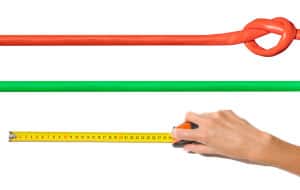Using the proper wire size for an electrical system is critical, especially when working with circuits that demand larger loads. For instance, you may want to know what gauge wire for 50 amp 220V circuits.
Although a wire gauge of 6 is recommended for this setup, other factors may influence the needed wire size, demanding a greater gauge. To help you determine the specific cable required for circuit installation, below is a guide for you to follow.
Table of Contents
What Wire Gauge for 50 Amp 220v Circuit and Why?
Like any other circuit, choosing a proper wire gauge for a 220V 50 amp service is crucial for electrical safety and the proper functioning of the system. It is important to know that utilizing an undersized wire for the circuit can be extremely risky.
On the other hand, using a wire too large for the electrical setup may not cause any damage. However, it may be pricey and add unnecessary costs to your budget.
Regarding a 50 amp breaker wire size with 220 volts, most professionals recommend using a minimum of 6 gauge. This is because 6 gauge can handle the current load of this circuit. To help you understand how much load every wire size can handle, you can check this helpful chart.
| Maximum Amperage Rating | 7 | 10 | 15 | 20 | 30 | 40 | 55 | 70 | 95 | 110 |
| Gauge / AWG (Wire Size) | 18 | 16 | 14 | 12 | 10 | 8 | 6 | 4 | 2 | 1 |
As you can see in the size chart above, a 6 gauge wire can handle an amperage rating of 55 amps. This rating is enough to hold the current on a 50 amp circuit.
How to Determine Wire Gauge
You should be able to determine the specific gauge you will purchase for your circuit. In this scenario, here is a brief advice to help you verify that you chose the correct size of wire.
- To begin, examine the label. New wires, in general, contain a label that shows their size. As a result, since you need a 6-gauge wire, you have to find a wire labeled 6 gauge or 6 AWG.
- Next, determine the number of conductors required for your application. Most 220V circuits require a 6/3, which stands for 6 gauge 3 conductors. However, some 220v circuits only require 2 conductors, so you only need a 6/2 wire.
- Finally, think about the cable with a ground connection. Although a ground is not necessary for a 220V circuit, it is critical for safety. Typically, the ground wire size should be the same as the conductor size.
Factors Affecting Wire Gauge for 50 Amp 220V
It is good to understand that several factors might affect the wire size, including:
1. Length of Wire
The length of wire required for an installation can impact the recommended wire size due to the increase in resistance, which leads to a higher percentage of voltage drop. Therefore, it is best to use a 6-gauge wire for a maximum application length of under 100 feet for optimal performance.
At 100 feet, 4 gauge is a better choice, while 3 gauge is advisable at 150 feet. In general, a larger wire size may be necessary to keep the voltage drop low and ensure proper electrical system functionality.
2. Conductor Material
It is essential to understand that the efficiency of electricity transfer varies across different conductors. Copper wire is the most common material used for home electrical wiring due to its high conductivity.
However, depending on the specific electrical requirements, aluminum wire, which has less conductivity than copper, is also used as the main cable. In cases where a 50 amp aluminum wire size is required, 4 gauge is recommended for 75 feet while 3 gauge is best at 100 feet.
What Happens if I Use Wrong Wire Size for 50 Amp 220V?
Using the wrong wire size for a 50-amp 220-volt circuit might have negative consequences. For example, the wire may overheat, posing a fire risk.
If the cable is excessively long, such as more than 200 feet, not upgrading to a larger wire may result in a higher voltage drop and an unstable power supply that might damage electronic devices.
Furthermore, non-compliance with electrical codes and regulations can have legal and financial consequences. Therefore, verifying that the wire size is appropriate for the circuit would be best.
Frequently Asked Questions
What Wire Size Do I Need for a 50 Amp Subpanel?
For a 50-amp sub panel, you can use a minimum size of 6 gauge for an installation at 75 feet or less. However, if you need it for more than a 100 ft distance of sub-panel installation, it would be best to step up your wire size.
Can an 8 Gauge Wire Handle 50 Amps at 50 Feet?
No. Utilizing 8-gauge wires might bring hazards to the circuit even if they are only for a 50 ft installation. Always remember that you should use a minimum of 6 gauge when installing a 50-amp circuit.
Conclusion
Determining what gauge wire for 50 amp 220v circuits is essential for providing safety to them. The use of incorrect wire sizes can result in hazardous situations.
It is always advisable to use only the recommended wire size when establishing a circuit, regardless of the power requirements of the electrical devices. To ensure that you are using the proper size of wire, you can seek advice from a professional electrician as well as consult electrical codes.

I am Edwin Jones, in charge of designing content for Galvinpower. I aspire to use my experiences in marketing to create reliable and necessary information to help our readers. It has been fun to work with Andrew and apply his incredible knowledge to our content.





